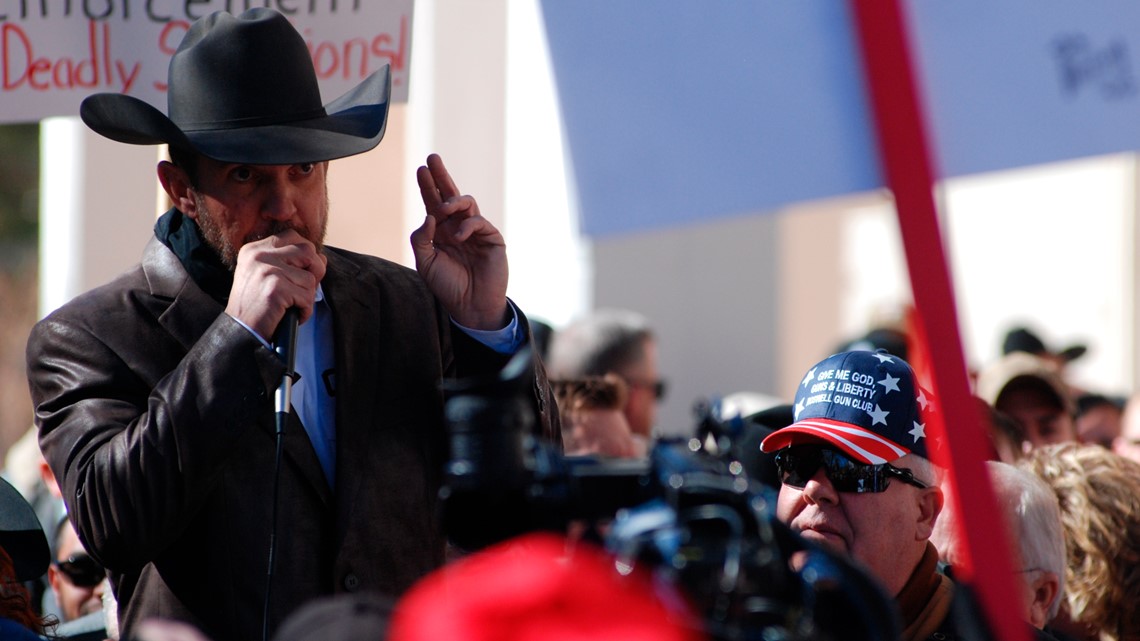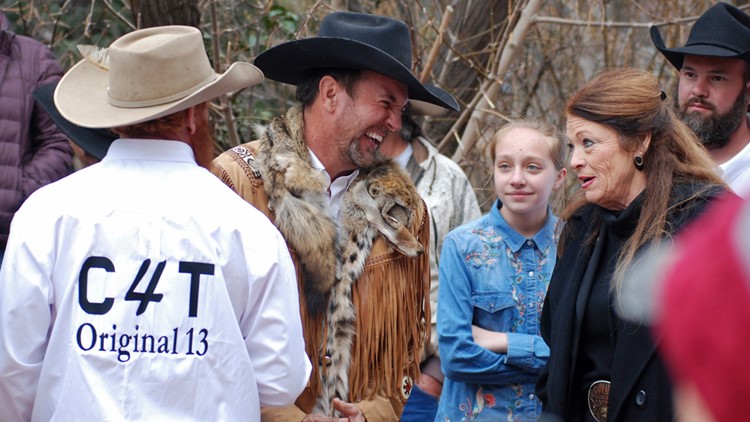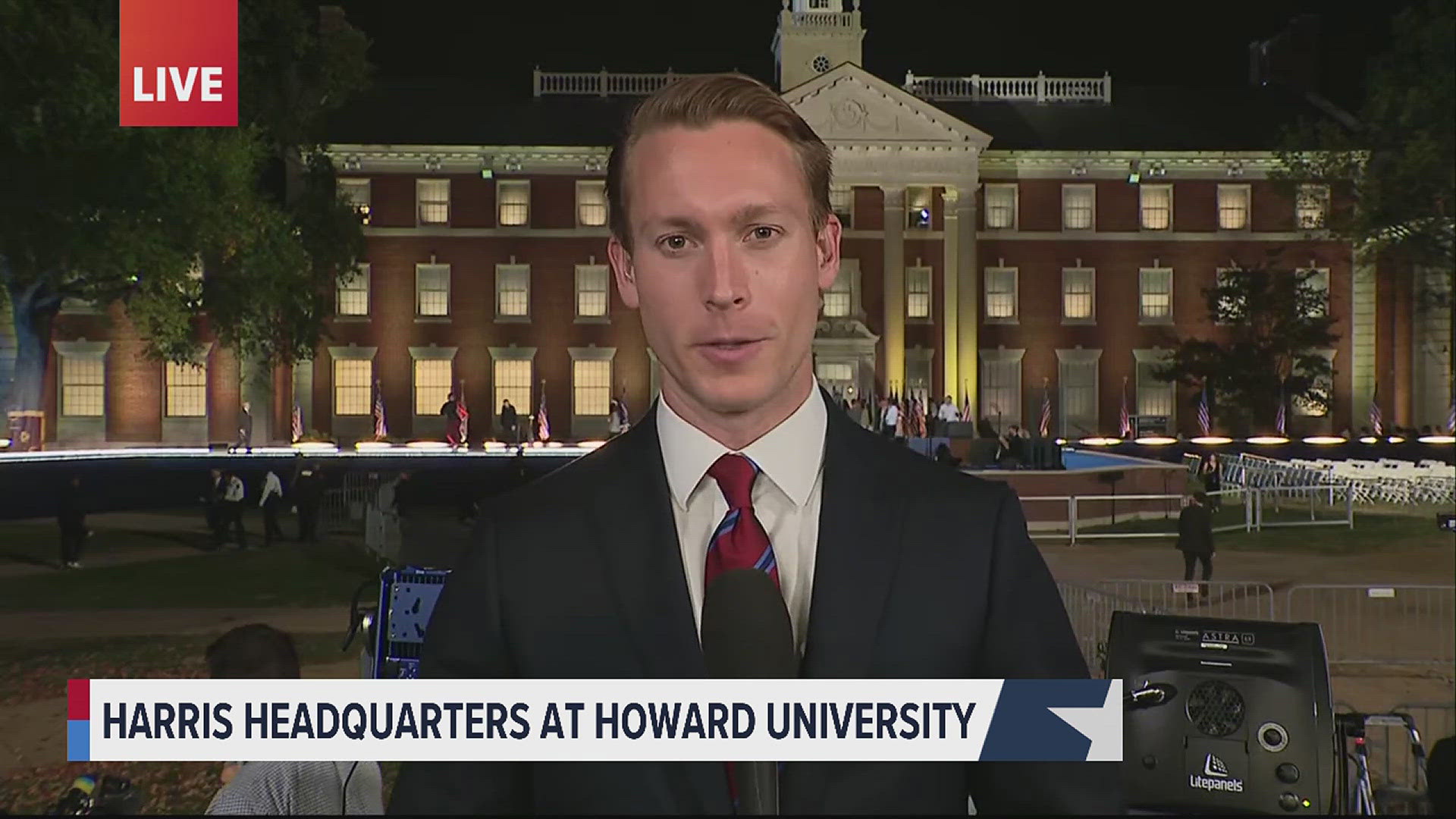WASHINGTON — For the first time, a U.S. Secret Service agent testified publicly Monday about the underground loading dock where Vice President Mike Pence and his family were evacuated on Jan. 6.
The testimony came late in the day during the trial for Couy Griffin, a commissioner in Otero County, New Mexico, and the founder of "Cowboys for Trump" who was indicted on two misdemeanor counts in connection with the riot. Griffin chose to forgo a jury in favor of a bench trial in front of U.S. District Judge Trevor McFadden, which began Monday morning.
Though Griffin was charged with some of the least serious offenses among Capitol riot cases, the trial was an important test for how much the government may have to disclose to other defendants about former Vice President Mike Pence’s whereabouts on Jan. 6. Jurors in the first Jan. 6 trial of Guy Reffitt saw a brief video of Pence and his family being evacuated from a ceremonial office in the Senate Wing. But Griffin’s attorneys, David and Nick Smith, pushed for far more information to be made public – arguing the vice president’s exact location at the time he entered Capitol grounds was critical to determining his guilt.


McFadden agreed with the defense, in no small part because the DOJ had erroneously listed Vice President-elect Kamala Harris as being present for months in the indictment against Griffin and other defendants. His decision set up a clash between prosecutors, who argued they were prohibited by law from releasing U.S. Capitol Police video of Pence, and the defense, who pressed for sanctions if it wasn’t.
Legal counsel for the U.S. Capitol Police Department told McFadden the video had initially been handed over to prosecutors, but that it had been clawed back once they realized it was protected. Shortly before 5 p.m., however, prosecutors informed McFadden they'd received permission to enter the video into evidence.
Prosecutors then called U.S. Secret Service Agent Lanelle Hawa, who testified on the public record for the first time about the whereabouts of Vice President Mike Pence and his family after they were evacuated from the Senate Wing on Jan. 6. Hawa, who was assigned to the agency’s liaison division on Jan. 6, testified that the Pences were moved to an underground loading dock beneath the Senate wing and near the visitor’s center. Hawa said his family remained there for more than four hours until the building was cleared and Pence could resume his duties. The Pences' location on Jan. 6 had previously been reported by journalist Jonathan Karl, who last year obtained previously unreleased photos of the vice president and his family in the loading dock.
In a contentious back-and-forth, Nick Smith asked Hawa about who decided on the security perimeter around the Capitol on Jan. 6 and whether the restricted area extended underground or would move with the vice president. After repeated objections from the DOJ, Smith angrily claimed prosecutors were attempting to stop him from asking legitimate questions — prompting assistant U.S. attorney Janani Iyengar to suggest they "bring the temperature down."
McFadden upheld the DOJ's objections and advised Smith to move on, telling him he'd failed to show Pence had left the restricted area — likely dooming that prong of his defense strategy.
Smith spent significant time developing a second prong, however, with the prosecution's primary witness, Matthew Struck. Struck, a freelance videographer, traveled to D.C. with Griffin on Jan. 6. Under an immunity agreement, Struck provided the DOJ with dozens of videos of Griffin on Jan. 6, including many showing him on Capitol grounds. In one video, Griffin appeared to say Capitol Police had told members of the crowd not to enter the area being prepared for President Joe Biden’s inauguration. In another, Griffin could be heard saying things would become “less and less” peaceful if, as he believed, election laws continued not to be followed. He also lamented on multiple occasions that, “Mike Pence sold us out.”
But Struck’s testimony was far from the nail in the coffin prosecutors might have hoped. He downplayed Griffin’s involvement at the riot – saying he’d just been there to look for a place to pray – and repeatedly said he either couldn’t remember or couldn’t hear potentially inflammatory statements on video. Under cross-examination from Griffin’s attorney, Struck said Griffin told him Pence had already certified the election before they got to the Capitol – which, though not true, proved Griffin thought Pence had already left the building, Smith said.
Smith himself criticized the DOJ for what he described as an attempt to prosecute Griffin’s religious motives.
“The government appears to claim Griffin’s leading of a prayer at the Capitol inflamed the crowd,” Smith said. “That is offensive and wrong. His conduct does not come close to incitement.”
Smith also focused in particular on questioning U.S. Capitol Police Inspector John Erickson, who the prosecution called to outline the restricted area on Jan. 6. Smith pressed Erickson on the exact contours of that area, how USCP handles Secret Service protectees and whether the Capitol Visitor’s Center was part of the building. Much of Smith’s questioning fell to objections from the DOJ, however, including a statement from another USCP officer he attempted to enter describing the U.S. Capitol Visitor’s Center – which is in the lower level of the Capitol – as being separate from the building. That would have been particularly helpful for Griffin, since, as Hawa testified, the vice president and his family were in the visitor's center loading dock while Griffin was on the Capitol grounds.
Court ended for the day shortly before 6 p.m. with no resolution. McFadden called Hawa back for closing arguments Tuesday morning at 9:30 a.m.
We're tracking all of the arrests, charges and investigations into the January 6 assault on the Capitol. Sign up for our Capitol Breach Newsletter here so that you never miss an update.



